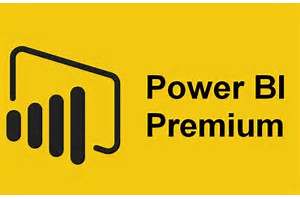What Does Power BI Premium Mean for You?
I’m sure we’ve heard the announcements today about Power BI Premium. In fact, Power BI Premium is so important that Microsoft has positioned it as a new product under the Power BI marketing umbrella name instead of a new licensing model. Microsoft and industry experts covered the announcements well so I won’t reiterate the obvious. You may wonder what these changes mean for you. Let’s summarize.
Power BI Portfolio
In a nutshell, Power BI Premium targets larger organizations which have faced two issues with the current Power BI licensing model:
- No “reader” license. If a report has a Power BI Pro features, all users accessing reports would need Power BI Pro license. So, if you a report that used Power BI Pro features, such as gateways or live connections and you won’t this report to be available to 1,000 users, you had to foot $10,000/month bill because everyone required Power BI Pro.
- Per user license. A case in point – one year after a successful Power BI hybrid pilot, a Fortune 100 organization has purchased whopping 5 Power BI Pro licenses. There are several reasons for the slow adoption by large companies but one of them is the per-user license.
Large organizations who are seeking a mass Power BI deployment to potentially thousands of users could save big with Power BI Premium (use the nice calculator to find how much). On the downside, I’m not happy about Microsoft requiring Power BI Pro licenses for contributors on top of Power BI Premium.
I don’t see smaller organizations being very much interested in Power BI Premium. For them, a welcome change would be that Power BI Free adds Power BI Pro features. On the downside, Power BI Free loses simple dashboard sharing. This reflects the Microsoft vision about Power BI Free: it is for individual users who are evaluating Power BI. To mitigate the impact of the Power BI Free changes, Microsoft offers one year Power BI Pro trial offer to all Power BI Free users as of May 2nd.
| Today | Starting in June 2017th | |
| Power BI Desktop | Connect to 70+ data sources Data transformations Report creation and exploration | No changes |
| Power BI Free | No live connections, No gateway connectivity Smaller capacity limits and data refresh rates Only simple dashboard sharing | Access to all data sources Performance equivalent to Power BI Pro No sharing (not even simple dashboard sharing) |
| Power BI Pro | Access to all data sources Larger capacity limits and data refresh rates All sharing options (simple, workspaces, org content packs) | No changes |
| Power BI Premium | Increased capacity limits Dedicated environment Content distribution (reader license) Power BI Report Server More features in future, such as in-memory caching, incremental refresh (read the whitepaper) |
Personally, I’d like to see more Power BI pricing tiers added, e.g. Standard tiers. Currently, the lowest Power BI Premium tier (P1) is $5,000 per month which would be probably out of reach for smaller organizations. But fear not, you can stay within the old Power BI Pro licensing model.
Power BI Report Server
Microsoft has decoupled SSRS from SQL Server so it gets more frequent updates. SSRS becomes actually two products:
- SSRS – This is the SSRS we know it but with no Power BI integration. It will get new RDL features but no Power BI features. See the Microsoft blogs here and here for more details.
- Power BI Report Server – Distributed as a standalone installer, Power BI Report Server is a superset SSRS as it gets both existing report types and Power BI reports. As far as the reason for the name change, the Power BI name is a strong brand while SSRS has been associated with the old style paginated reports.
You can get Power BI Report Server in two ways:
- As a part of the Power BI Premium bundle. You get the same number as licensed EE cores as the number of v-cores you purchased with Power BI Premium.
- Standalone and covered by a SQL Server Enterprise Edition with Software Assurance license, plus Power BI Pro licenses for report authors (as with Power BI Premium).
So, although Power BI Report Server has divorced SQL Server, it’s still covered by its license (kind of when you send your kid to college but she still lives with you). Currently, SQL Server doesn’t check for Software Assurance in any way (there isn’t such SKU). So, it looks like Power BI Premium licensing would be an honor system for customers who want to get it standalone covered by a SQL Server Enterprise Edition license.
Power BI Embedded
Power BI Embedded has been gaining a lot of traction but the problem was that it’s separate from Power BI Service. Consequently, it had to catch up with Power BI Service. For example, it still doesn’t have connectivity to on-premises data sources. The good news is that Power BI Embedded marries Power BI Service so there will be a feature parity and a common set of APIs. The part that I’m not excited about is that its new licensing model requires Power BI Premium (good bye per-session licensing). This might be a showstopper for small ISVs. I hope that Microsoft introduces less expensive pricing tiers to better cater for needs of smaller companies. [Update 6/15/2017: Microsoft announced low-cost EM* plans for Power BI Embedded starting at $625/mo]





